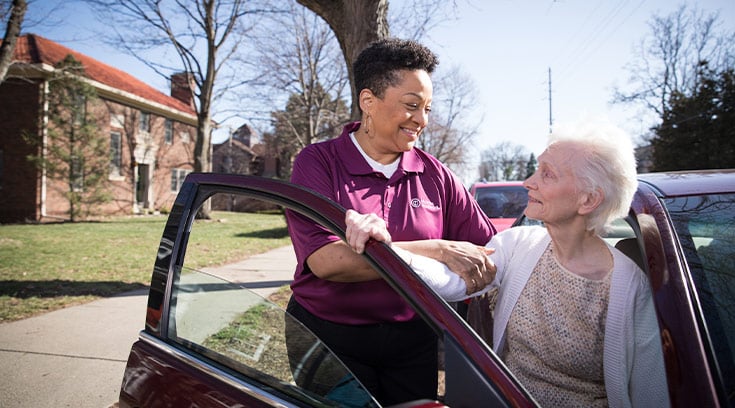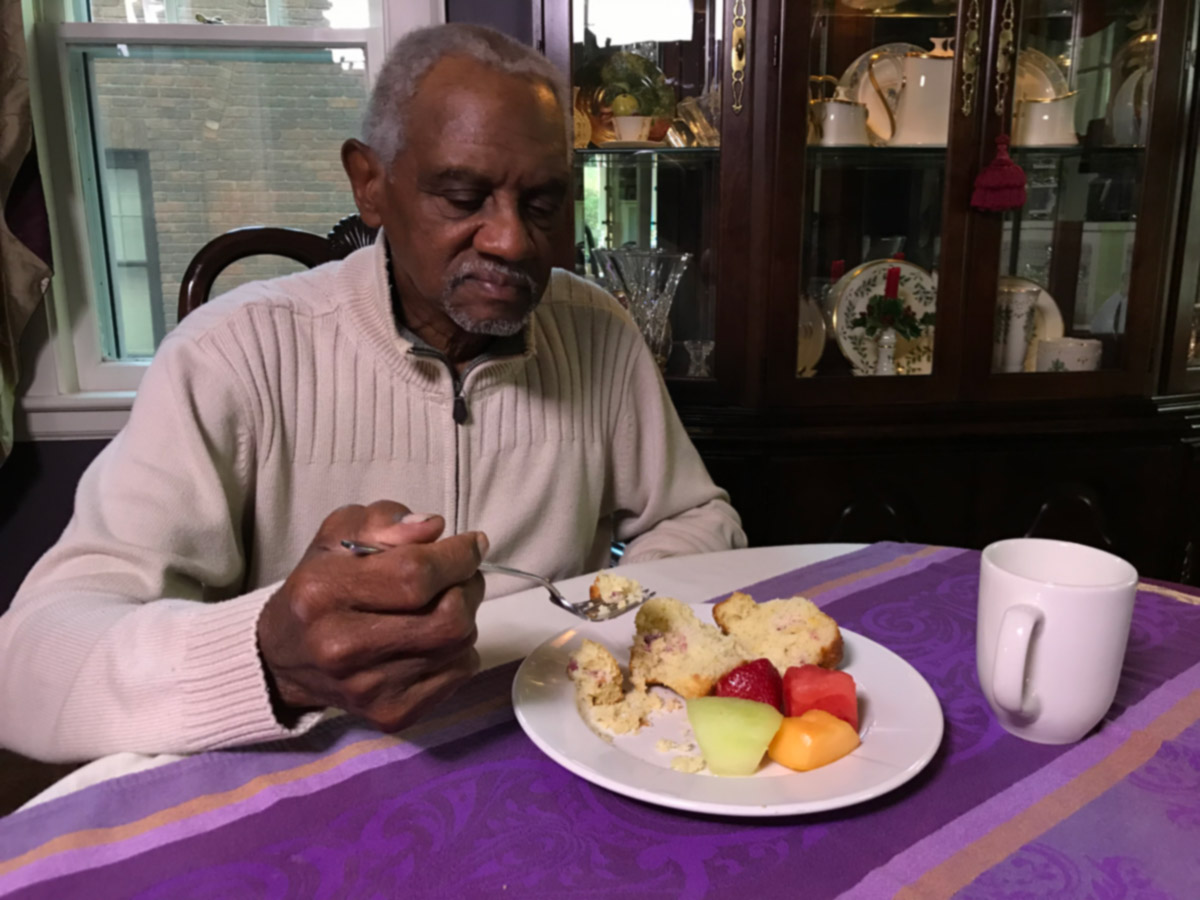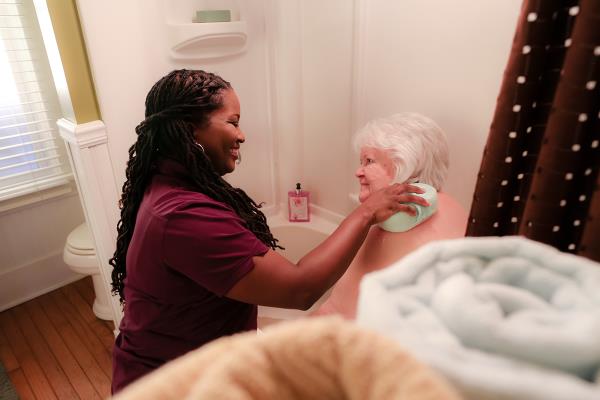“I’m so hungry,” Larry, age 72, said to his home care assistant as he sipped on chicken broth. “I would kill for a steak right about now.” The pair chuckled for a moment because they knew Larry’s temporary clear liquid diet would be finished tomorrow, after his colonoscopy.
Althea wasn’t as lucky. At age 66, she had a stroke that left her with dysphagia—difficulty swallowing. After she was hospitalized for aspiration pneumonia caused by inhaling small bits of food and beverages, Althea had to go on a pureed and thickened liquids diet.
“I’ve been blending my foods for months now,” she sighed. “They taste all right, but sometimes I sure miss getting my teeth into a nice, fluffy southern biscuit.”
Many medical conditions, tests and treatments can require an older adult to go on a restricted diet. Sometimes the restriction involves nutrient control, such as a low-sodium diet, while other times the consistency of foods must be altered, as with thickened liquids.
No matter why an older adult may have to go on a restricted diet, caregivers and Care Professionals can play a key role in helping them learn how to prepare and manage their new dietary reality.
Low-Sodium Diet
Millions of older adults with hypertension or heart failure must restrict their sodium intake. Fortunately, giving up the salt shaker doesn’t have to mean bland, unappealing food choices.
To help older adults lower their sodium intake without compromising nutrition or food appeal, try:
- DASH Diet: “Dietary Approaches to Stop Hypertension”—aka “DASH”—is a program developed by the U.S. National Institutes of Health to study the effect of dietary intake on blood pressure. The diet’s effectiveness has been validated many times over since its introduction in the early 1990s. You can access the DASH eating plan, recipes and more on the NIH website.
- Cut Out the Salt: Easy tips for reducing sodium consumption from Dietitians of Canada.
- Lower Sodium Foods Shopping List: Easy-to-follow guide from Healthfinder.gov.
Low-Carb or Diabetic Diet
Older adults with diabetes or prediabetes may be advised to follow a special diet to better control their blood sugar levels. However, it’s not as simple as cutting refined sugar out of the diet.
To put together a healthy eating plan for an older adult with blood sugar concerns, try:
- Meal Planning: The American Diabetes Association offers a wealth of meal planning tools, including free recipes.
- Sugar-Free Recipes: Many online recipe repositories offer sugar-free alternatives for appetizers, main dishes and desserts.
Clear Liquid Diet
Older adults facing certain tests or procedures may have to go on a clear liquid diet for some period of time in advance of the appointment. Alternatively, recovering from bowel surgery or another condition may warrant consuming only clear liquids for a while, too. “Clear liquid” means just that: a person must only drink thin, watery beverages they can see through. This type of restriction is usually short-term because of the challenge in delivering adequate nutrients through thin liquids.
To help an older adult follow a doctor’s clear liquid diet instructions, review these guidelines:
- Clear Liquid Diet Overview: This Mayo Clinic guide covers the reasons why a person may need to follow a liquid diet, and what types of foods are generally allowed.
- What to Eat Before a Colonoscopy: This guide shares exactly what types of food a person can eat on a liquid diet before a colonoscopy.
Pureed or Mechanical Soft Diet
Older adults who have trouble swallowing or chewing due to a stroke, cancer treatment, poor dentition or another condition may need to go on a pureed or mechanical soft diet for days or even years. A pureed diet consists of foods that do not require chewing because they have been mashed or pulverized in a blender. Mashed potatoes are one example of an item on a pureed diet.
The term “mechanical soft” refers to the mechanical act of chewing. A mechanical soft diet consists of foods that require very little mastication, such as ultra-tender meats or vegetables that can easily be broken up into small pieces without using a knife.
Because pureed diets can be made at home using a food processor or blender, you can help older adults maintain adequate nutrition by suggesting types of food to blend together, such as appropriate ratios of fats, carbohydrates and protein.
For more resources about how to create appealing pureed and mechanical soft diets, refer to:
- Pureed Foods and Thickened Liquids for People with Dysphagia: This comprehensive guide from Canada’s University Health Network offers specific details about how to cook and puree individual foods and meats, along with how to puree entire meals.
- Eating Guide for Pureed and Mechanical Soft Diets: Memorial Sloan Kettering Cancer Center offers guidance on how to maintain nutrition while on a soft diet.
- Pureed Diet: The University of Wisconsin Hospitals and Clinics Authority offers an easy-to-follow chart of recommended foods for a pureed diet.
Thickened Liquids
Sometimes a person can swallow whole pieces of food but has difficulty drinking thin liquids like water. This type of dysphagia can affect older adults with dry mouth issues or other medical conditions. To avoid aspiration, a thickened liquids diet may be prescribed.
To manage thickened liquid diets, consider:
- This guide: Using Thickened Liquids for Safer Swallowing from the University of Iowa covers all the basics, including how to make your own thickener.
- Tips for Choosing and Using Food and Beverage Thickeners: This article from AgingCare.com addresses important social concerns associated with a thickened liquid diet, such as how caregivers can help an older adult maintain dignity and independence in their mealtime routine when thickeners are involved.
It can be a challenge for some older adults to prepare a meal plan, shop and cook even when they don’t have a medical condition or procedure that requires following a restricted diet. By understanding the common reasons why an older adult might have to follow a special diet, you can help them prepare nutritious meals that meet their doctor’s guidance for nutrition or food consistency.
Compassionate Home Care




